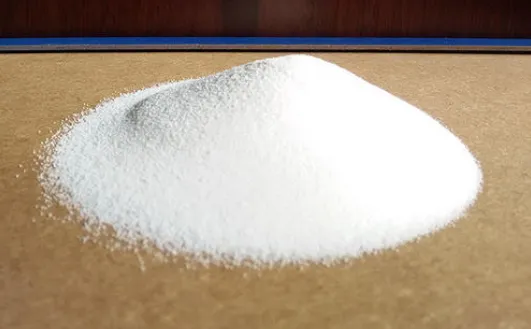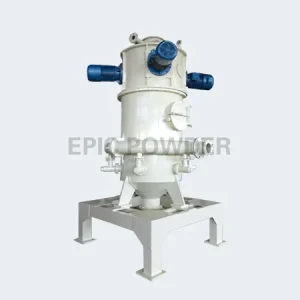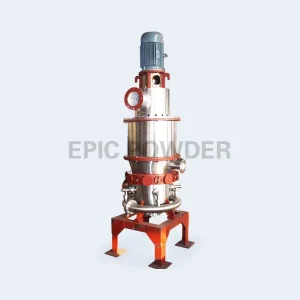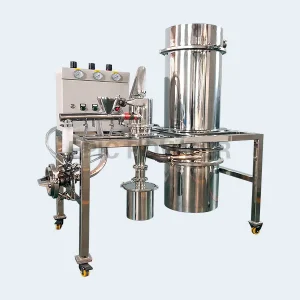White carbon black is the general term for white powdery X-ray amorphous silicic acid and silicate products, primarily referring to precipitated silica, fumed silica, and ultrafine silica gel, as well as powdered synthetic silicic acid aluminum and calcium silicate, etc. White carbon black is a porous material and its composition can be expressed as SiO2·nH2O, where nH2O is present as surface hydroxyl groups. Soluble in caustic alkali and hydrofluoric acid, but insoluble in water, solvents, and acids (excluding hydrofluoric acid). It is high-temperature resistant, non-flammable, tasteless, odorless, and has good electrical insulation.

What is white carbon black?
According to the production method, silica is generally divided into precipitation silica and gas phase silica. Vapor-phase silica is a form of white, amorphous flocculent translucent solid colloidal nanoparticles (particle size less than 100nm) under normal conditions. It is non-toxic and has a huge specific surface area. Vapor-phase silica is made up of nano-silica, with purity up to 99%, with particle sizes up to 10~20nm, but the preparation process is complex and expensive; precipitation silica is divided into traditional precipitation silica and a special precipitation method silica, the former refers to silica produced using sulfuric acid, hydrochloric acid, CO2, and water glass as the basic raw materials, while the latter refers to silica produced using hypergravity technology, sol-gel method, chemical crystal method, and secondary crystallization. Precipitated silica is mainly used as a reinforcing agent for natural rubber and synthetic rubber, toothpaste friction agent, etc. Fumed silica is mainly used as a reinforcing agent for silicone rubber, coatings, and unsaturated resin thickeners. Ultrafine silica gel and aerogel are mainly used as coating matting agents, thickeners, plastic film opening agents, etc.
Application of white carbon black
Silica, also known as hydrated silica chemical formula for SiO2-nH2O, is a white, non-toxic, amorphous micro-fine powdered inorganic silica compounds with porous, highly dispersible, lightweight, chemically stable, high-temperature resistance, non-combustible, good electrical insulation, and other excellent properties, has been widely used in plastics, rubber, papermaking, coatings, dyes, and printing ink and other fields.
Applications in tires
Silica is used as a reinforcing agent and the largest amount is used in the rubber sector, where it accounts for 70% of the total. Silica significantly improves the physical properties of rubber, reduces rubber hysteresis, and lowers the rolling resistance of tires without loss of their resistance to wet skidding. In the rubber industry, carbon black is a very effective reinforcing agent, its biggest disadvantage is that it can not be used to prepare colored products. Ultrafine silica as a reinforcing filler for the production of green tires, can be used in place of carbon black in the sidewall, significantly increase the sidewall of the tear strength and resistance to crack growth performance, while no significant effect on vulcanization time, resistance to ozone aging is dependent on the amount of antioxidants and silica. Adding silica to the tread rubber of tires can improve the tread’s cut and tear resistance, and reduce bouncing and falling blocks. The rolling resistance of silica-filled rubber can be reduced by 30% compared to ordinary carbon black-filled rubber.
Application in defoamer
Vapor phase silica generally have hydrophilic and hydrophobic two kinds of products. Hydrophobic products is the use of hydrophilic products after surface chemical treatment. Now, defoamer manufacturers generally use hydrophobic vapor phase silica, the use of its surface hydrophobic groups to attract the hydrophobic end of the surfactant in the foaming system, so that hydrophobic solid particles become hydrophilic, thus reducing the concentration of surfactant in the foam, and thus improve the speed of antifoam. Promote the foam rupture and improve the defoaming speed.
Application in paint and coating industry
Silica can be used as rheology additives, anti-sinking agent, dispersant and matting agent in the production of coatings, playing the roles of thickening, anti-sinking, thixotropy, matting and so on. And it can also improve the weather resistance and scratch resistance of coatings, improve the adhesion strength between the coating and the substrate as well as the hardness of the coating, improve the aging resistance of coatings, and improve the UV absorption and infrared light reflection properties.
Application in electronic packaging
Through the surface-active treatment of fumed silica fully dispersed in the silicone-modified epoxy resin encapsulation adhesive matrix, you can significantly shorten the encapsulation material curing time (for 2.0-2.5h), and the curing temperature can be lowered to room temperature, so that the sealing performance of the OLED device has been significantly improved to increase the service life of the OLED device.
The addition of fumed silica application so that the past need to be in a special environment to realize the process of electronic device encapsulation is reduced to room temperature conditions, significantly reducing production costs, and shorten the encapsulation material curing time, greatly improving the production efficiency and reduce production costs, the popularization and application of a new generation of OLED display technology has a promotional role.

Application in plastics
Silica is also often used in new plastics. Adding a small amount of silica when mixing plastics will produce an obvious reinforcing effect and improve the hardness and mechanical properties of the material, thus improving the processing technology and the performance of the products. In addition, silica has the characteristics of small particle size and high transmittance, which can make the plastic become more dense and increase the transparency of the plastic.
Application in ceramics
With gas phase silica instead of nanometer Al2O3 added to 95 porcelain, both can play the role of nanoparticles, at the same time it is the second phase of the particles, not only to improve the strength and toughness of the ceramic material, but also to improve the hardness of the material and the elastic modulus and other properties, the effect is more desirable than the addition of Al2O3. The use of gas-phase silica to compound ceramic substrates not only improves the densification, toughness and finish of the substrate, and the sintering temperature is reduced significantly. In addition, gas phase silica in ceramic filters, corundum balls and other ceramic products in the application of the effect is also very significant.
Application in the paper industry
making itIn the paper industry, fumed silica products can be used as paper gluing agent, can improve the whiteness and opacity of paper, can improve oil resistance, abrasion resistance, feel, printability, gloss. And it can also be used for solarization paper, which can make the paper surface quality, ink stability, no cracks on the back, and it can be used in azide paper to produce excellent blueprint paper, and it can be used in coated paper instead of titanium dioxide. Adding 1-2% fumed silica products can reduce the weight of the paper, and paper thin, can improve the strength, prevent ink penetration, but also can make the printing text clear, increase opacity.
Application in toothpaste
Precipitated silica is the main friction agent for toothpaste at present. Precipitated silica has a large specific total surface area, strong adsorption capacity, adsorption of substances, and uniform particles, which is conducive to improving transparency, because of its stable nature, non-toxic and harmless. It is a better raw material for toothpaste. Silica’s refractive index is 1.45 to 1.50, which is very close to the refractive index of other ingredients in toothpaste, so when mixed together, it acts as a transparency agent. This property is used to make transparent toothpaste, a feature not found in any other rubbing agent.
Applications in cosmetics
The excellent properties of silica, such as non-toxicity, odorless and easy coloring, make it widely used in the cosmetic industry. Silica is used in skin care products and cosmetics, so that the skin produces a smooth and soft feeling (“ball bearing effect”), resulting in the “soft focus effect”, which makes the light irradiated on the surface of the skin evenly distributed, so that it is not easy to detect wrinkles and blemishes of the skin. Skin bleaches. In addition, silica’s thixotropic properties prevent pigments from settling and can be used in products such as lipstick and nail polish.
Application of Silica in Rubber Shoes
Silica high whiteness, fine particles, the use of transparent silica vulcanized rubber produced by high transparency, and can improve the overall physical properties of the rubber, so silica as the main reinforcing filler is widely used in high-grade leather shoes, sports shoes, shoe soles in the production of materials, especially in the transparent and semi-transparent soles in the rubber. It can improve the abrasion resistance, hardness, tensile strength and tear strength of shoe soles.
Application in pharmaceutical industry
The physiological inertness, high absorption, dispersion and thickening properties of silica have been widely used in pharmaceutical preparations. French researchers have found that in ranitidine, methomylamine, pirenzepine and other drugs, respectively, adding a small amount of gas-phase silica will change its mobility; in drugs containing ashwagandha and other drugs, adding a small amount of gas-phase silica can change its dissolution rate, i.e., to change the dispersion of difficult-to-solubilize drugs in the water and absorbency; in the powder containing aspirin, adding a small amount of gas-phase silica, will change the powder’s Antistatic properties.
Silica as an absorbent, dispersant can also be used in the production of western medicine tablets such as vitamin C; in the production of pharmaceutical capsules, adding a small amount of silica can play the role of carrier. According to the editors of China Powder Network, the Japanese researchers found that in the formula of polyethylene packaging materials, adding a small amount of silica can be made into sterilized packaging film for pharmaceutical products.
Applications in Inks
Silica is also used to control the flow of ink in printers so that it does not flow or hang arbitrarily for a crisp print. In beverage cans, it controls the use of high speed spray coatings carried out. Fumed silica is also used as a dispersant and flow control agent in toning cartridges for copiers and laser printers.
Applications in Pesticides
Silica is used in pesticides as herbicides and insecticides. In mixtures of two common herbicides, dinitroaniline and urea, the addition of small amounts of fumed silica and precipitated silica prevents caking of such mixtures. The addition of small amounts of fumed silica to granular insecticide formulations will be more effective in controlling and preventing the production of harmful organisms. Silica can also be used as an absorbent for contaminants in the soil, absorbing them.
Application in daily necessities
Food packaging bags with silica added to fruits and vegetables can play a role in preserving freshness. Silica can also be used as a highly effective fungicide to prevent and control various diseases of fruits; in the production of alcohol, add a small amount of silica to purify the beer and extend the freshness period. In the knitted fabric containing vinyl chloride, adding a small amount of fumed silica will change its performance, and silica plays the role of matting agent. It remains on the surface of the fabric and does not penetrate the fabric.
What kind of crushing equipment is suitable for crushing white carbon black?
Preparation of easily dispersed ultrafine white carbon black using fluidized bed jet mill crushing system. The specific airflow crushing process control requirements and common problems are as follows:
Jet pulverizing process This process mainly consists of fluidized bed jet pulverizer or disc type jet pulverizer, air compressor system, feeding system, mixing system, dispersant adding device (added according to customer needs), quantitative feeding device (single feed material or double feed), screening system, iron removal system, dust removal system, packaging system, etc.
Key points of jet mill process control
(1) Adjusting the height of the telescopic cylinder of the disc mill or the speed of the classifier of the fluidized bed mill will affect the Hagermann fineness value and output. When up to 4 rings are used to adjust the height of the telescopic tube and then adjust the material outlet distance, it can be understood as follows: take out all 4 ring rings and the outlet telescopic tube, and then reposition them according to the table (place n at the bottom first ring, then place the outlet telescopic tube, and finally place 4-n more rings on the top). Note: The feeding speed, feeding pressure, grinding pressure, and push nozzle position have not changed, only the grinding situation after the ring ring position has been changed.
(2) Eliminate the phenomenon of hopper bridging. In the upper part of the screw conveyor feeder, the raw material may form a cavity due to bridging phenomenon, which will affect the actual feed quantity and thus the output. Installing a vibrator can eliminate the bridging phenomenon.
(3) By adjusting the working pressure and feed volume, product quality can be adjusted to a limited extent.
(4) After the pigment is ground, the color changes. The higher the working pressure, the greater the air intake volume per unit time, and the greater the range of color changes per unit pressure may be. There is no exact rule. Note: Grinding is only to obtain the appropriate product fineness and change the color of the product to a limited extent. It is not recommended to adjust the grinding parameters to achieve a large-scale color change.
(5) Generally speaking, the Hagermann clarity value of the product is smaller than the Hagermann fineness value. The product clarity is affected by the content of raw material sieve residues. After ultra-fine grinding, the clarity can only be improved, but ultimately it cannot be used. Clarity and fineness are the same.
(6) The production rate is controlled by the frequency of the screw feeder, and the feed quantity is related to the vibration density of the raw material and the tightness of the Venturi system. For example, whether the pressure balancer is closed has a greater impact on the feed amount of iron yellow pigment, but has a smaller impact on iron black and iron red. We can also open the balancer and increase the feeding frequency to increase the feeding speed and increase the output. The current approach is to close the pressure balancer.
(7) By adjusting the working pressure, the required product quality can be obtained. For example, for iron red, iron black and iron yellow products, when other conditions remain unchanged, the fineness can be improved by simply increasing the working air pressure. At the same time, increasing the working pressure can reduce the viscosity of iron yellow. However, there is a limit to increasing the working pressure to change the fineness. Beyond this limit, it will not be of much help in changing the fineness.
(8) The Venturi feed port must be aligned with the position of the upper pad of the grinding chamber of the mill. There are 6 to 12 grinding nozzles evenly distributed around the grinding chamber. The injection positions of these nozzles are consistent with the direction of the Venturi feed. If the directions are inconsistent, it may cause material backlash, that is, powder emission.
(9) Product fineness: It is related to the production method and production process of raw materials, microscopic particle shape, crystal shape, aggregate size, etc.
(10) Oil absorption and viscosity of iron yellow products: It is related to the production method, production process, microscopic particle shape, crystal shape, aggregate size, etc. of raw materials. The oil absorption and viscosity of iron yellow products can be reduced by adding additives, but generally It is not recommended to add it. Physical rolling can be used to reduce the oil absorption and viscosity of iron yellow products.
(11) The root cause of powder emission is the imbalance of system pressure, which is a natural phenomenon caused by the formation of large positive pressure in the system. At the same time, too little feed amount will also cause an imbalance in the system and powder emission will also occur; when the bag Due to aging and clogged holes in the dust collector bag, dust may also occur.
(12) The impact of the dust collector separation system on the production process: The dust collector separation system should have sufficient separation capacity, and the 1800-3600m3/h waste gas generated in the system should be removed through forced exhaust to maintain normal operation of the system. According to production needs, the system is kept in a slightly positive or slightly negative pressure state by adjusting the opening degree of the damper. Generally speaking, the regulating damper is fully open. Due to long-term use, the dust collector bag is easily blocked by dust, which will cause excessive back pressure to the system unit. Therefore, the bag and separator should be cleaned, especially when the dust collector requires relatively high backflush pressure. It may be caused by blockage. What causes the bag to become clogged? Aging of cloth bags, adhesion of sticky substances, long-term separation of waste gas with high moisture content, high moisture content of raw materials, magnetism of raw materials, etc. are all causes of bag blockage.
(13) Iron remover and screening machine system – the final quality control level: Although the materials are screened and impurities are removed during feeding, it is inevitable that some solid impurities will slip through the net, including screws, stones, and system equipment due to corrosion. Potential risk of debris and other foreign matter entering the finished product. Therefore, before the materials finally enter the storage tank, magnet iron removers and high-frequency screens can be used to remove these foreign objects to ensure product quality and improve quality.



